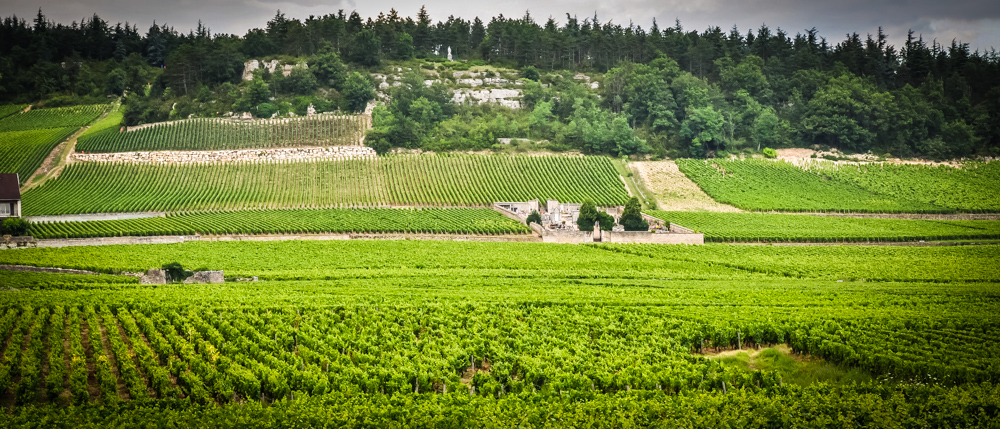Many experts agree upon, that some of the most exciting wines in the world come from Burgundy, a region that begins 100 kms south from Paris and reaches down to Lyon. A 360 kilometre long wine superhighway with stars such as Chablis and Beaujolais. Take a wine road trip with us and learn about what makes the wines different in Burgundy from the rest of France.

The area
Burgundy is an area with various soils, divided in numerous districts: Chablis, Côte d’Or (divided in Côte de Nuits and Côte de Beaune), Côte Chalonnaise, Mâconnais and Beaujolais.
Burgundy wines are of a velvety and subtle red or of a sensual and characteristic white. The region produces two of the most popular wines in France: Beaujolais and Chablis. The main grapes in Burgundy are Pinot Noir for red wine and Chardonnay for white wine.
Terroir
In France, particularly Burgundy, there is the belief that the role of winemaker is to bring out the expression of a wine’s terroir. The concept of terroir means that wines from a particular region are unique, incapable of being reproduced outside that area, even if the grape variety and wine-making techniques are painstakingly duplicated. This means, that the crisp whites from Alsace and dark reds from Chateuneuf-du-Pape are not primarily different because of the grape, but because of the terroir. Winemakers in Burgundy don’t believe that they are making a Pinot noir that happens to be grown in Burgundy, but that they’re producing an extraordinary Burgundian wine, that happen to be a Pinot noir.




Wine regions
Chablis
The Chablis region is the northernmost wine district of the Burgundy region in France. The grapevines around the town of Chablis are almost all Chardonnay, making a dry white wine renowned for the purity of its aroma and taste. The cool climate of this region produces wines with more acidity and flavours less fruity than Chardonnay wines grown in warmer climates.
Côte de Nuits
is the northern region of the Côte d’Or; the limestone ridge that is at the heart of the Burgundy. Though some white and rosé wines are produced in the region, the Côte de Nuits is most famous for reds made from Pinot noir. They are all robust and elegant red wines with an intense and fragrant bouquet.
Côte de Beaune
The region of Côte de Beaune, the southern part of the Côte d’Or, covers only about twenty kilometres but as it is exposed to the rising sun, the greatest dry white wines in the world grow alongside renowned red wines. The fame of the Côte de Beaune vineyard is closely related to its capital, Beaune, the true historical and economic centre of Burgundy wine production. Red Côte de Beaune wines are noticeable for their aroma and their warm bouquet. They have a tendency to a slightly lighter body and a quicker maturation than the Côtes de Nuit wines.




Côte Chalonnaise
Nestling between the Côte de Beaune to the north and the Mâconnais to the south, the Côte Chalonnaise is one of the most beautiful wine-growing regions of Burgundy. While it’s not as renowned as its northern neighbour, it’s much more a microcosm of Burgundy and offers a great variety in the wines produced.
Mâconnais
The Mâconnais takes its name from the Town of Mâcon and is the largest producing area of white wine in Burgundy. White wine in Macon is light and dry. It is typically an everyday wine, affordable and easy-drinking. Its Red wine is light to medium and fruity.
Beaujolais
Wine expert Karen MacNeil has described Beaujolais as “the only white wine that happens to be red”. Beaujolais wines are generally made of the Gamay grape, which has a thin skin and is low in tannins. Beaujolais tend to be very light-bodied red wines, with relatively high amounts of acidity.
Burgundy Wine Map
The passionate team at WineFolly has made this great guide to the Burgundy wine areas. Now you have no excuse to go yourself and find your own, favourite Burgundy!



